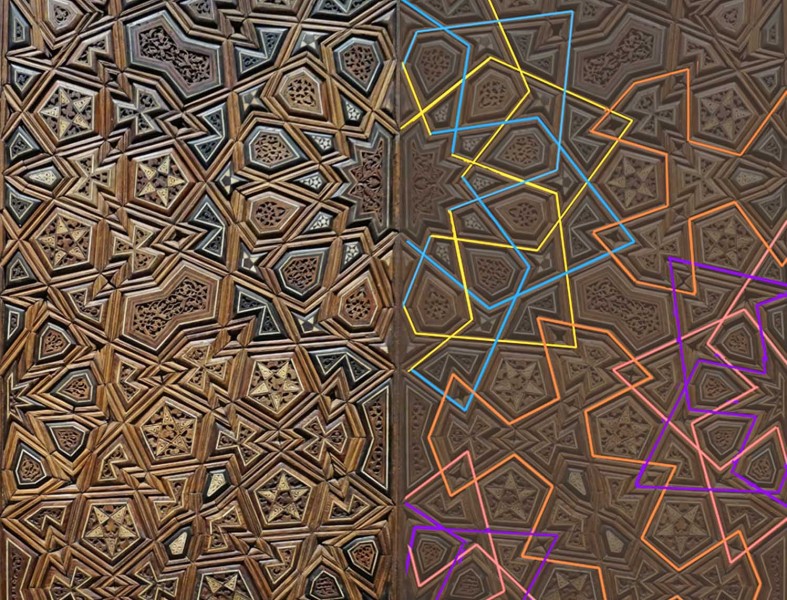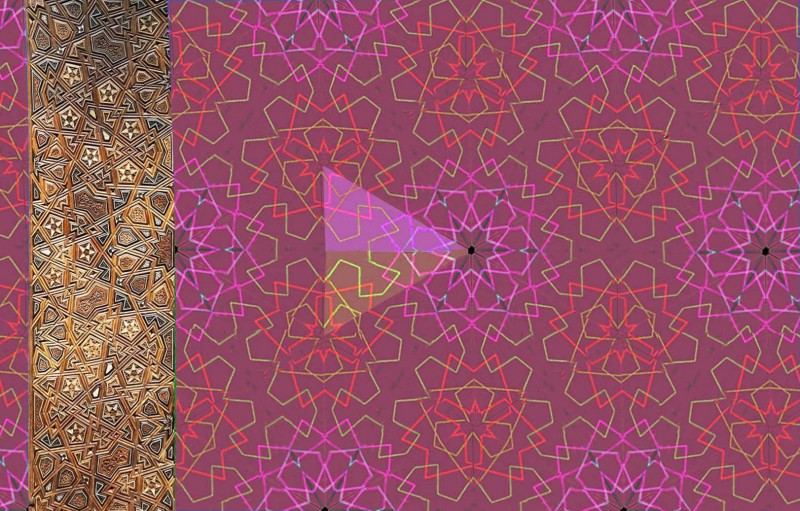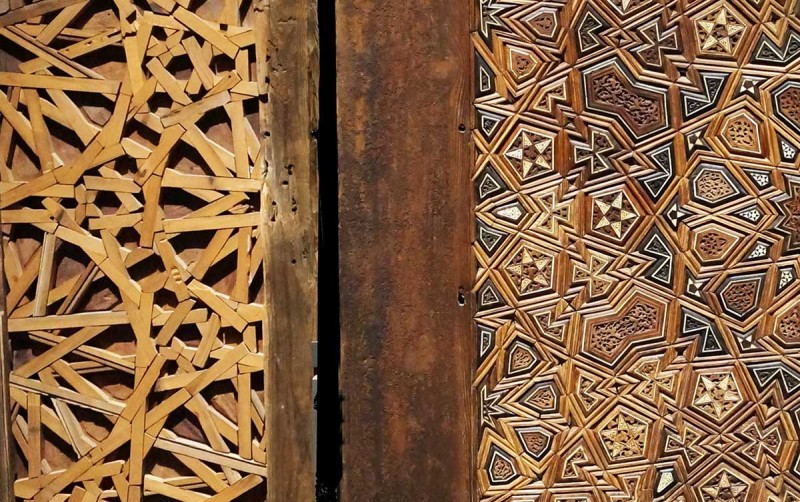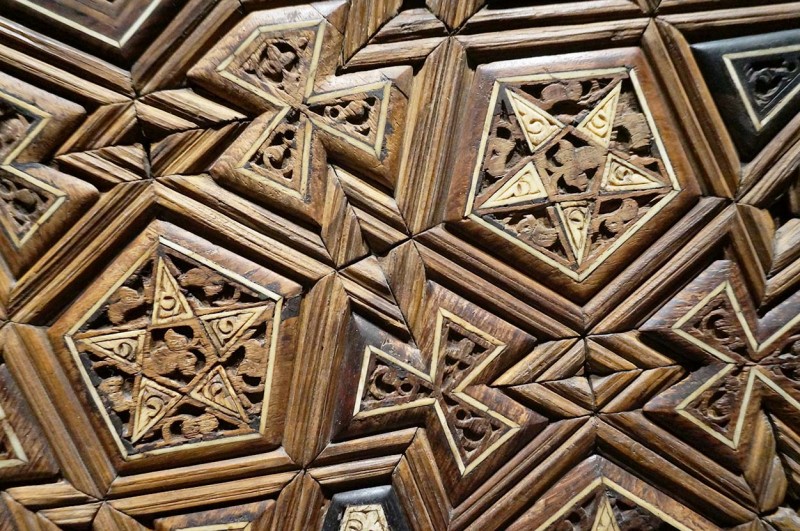I’m fascinated by the way that spectacular aesthetic effects often seem to involve bamboozling our everyday strategies for making visual sense of the world. This is a beautiful example, a detail of interlace decoration on a 14th century (Western dates) Mamluk Period door in the Louvre from the Al-Maridani mosque in Cairo. (I’ve shown other examples of a role for bamboozled perception in aesthetics in an earlier post, and in the Illusions and Aesthetics category to the right).
As you can begin to see in the image, where I’ve combined the interlace pattern on the door with a schematic analysis of its reflection, the interlace we see in the door is a segment of a rosette pattern that repeats across a wider field. But that’s not obvious at all when you just see the door. The artist has not emphasised the lines of the design, but rather the infills – stars and other little geometric tiles. We’re distracted from grasping the overall geometry by all the assertive, enclosed shapes, with their heavy outlines. And the overall shapes that do jump out for me are the beautiful curves that run from top to bottom of the image, which also distract attention from the hexagonal geometry of the pattern. For more analysis of the pattern and the fabrication of the doors, see below, but first, here’s the whole door.
Here’s the whole rosette pattern, with the door shown as a continuation of it to the left. I’ve just had to distort the image of the door a little to get it in register with the geometric version. The overall symmetry of the design is not obvious in the door decoration at all – as mentioned above, it’s camouflaged by the details of the decoration. The symmetry hides a secret too. Note the reflected triangles in the centre of the image. The design within the lower triangle is just a reflection of the upper one, and the entire hexagonal pattern is made up just of repetitions by reflection and rotation of the design within each triangle. So each triangle encloses the fundamental region of the pattern, if you like a bit of technicality.
However, the fundamental region does not seem to have been the starting point for the artists who made the doors. This next picture shows a segment of the door, with a view of the back of a similar door, though one with a simpler rosette design. The doors are shown side by side in the Islamic gallery in the Louvre. The artists seem to have started with a wonderful underlying armature based on the rosettes. The armature then provided a support for the dozens of small wooden tiles, each of them either a little island of pattern infill, such as a star, or a segment of the borders separating them. It’s fabulous – surely one of the masterpieces of all Mamluk interlace.





